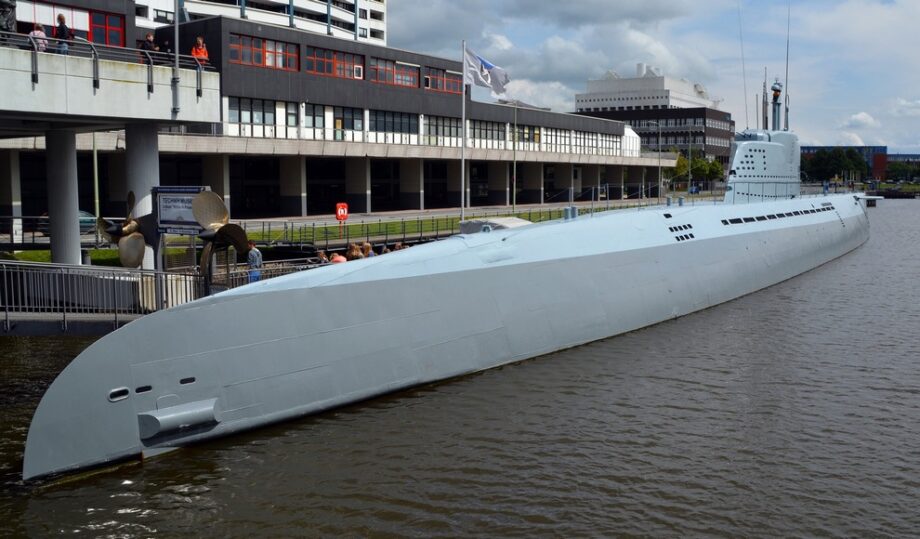The USS Pampanito is an American Balao-class submarine. Third US Navy ship named after the pompano fish. She took part in the hostilities in the Pacific Ocean in 1944-1945. Currently listed as a National Monument, it is parked at Fisherman’s Wharf in San Francisco. For her service during the Second World War, she was awarded six Battle Stars.
The submarine was laid down on 15 March 1943 at the Portsmouth shipyard in Kittery, Maine. Launched on July 12, 1943 under the command of Lieutenant Commander Charles Jackson.
On February 14, 1944, in transit through the Panama Canal, she arrived at Pearl Harbor.
The first combat service of the boat took place from March 15 to May 2 on the southwestern approaches to Saipan and Guam. She took part in a rescue operation south of the Yap Islands, after which she went to the base to repair a hull damaged by depth charges.
The second combat service of the boat took place from June 3 to July 23 off the coast of the islands of Kyushu, Shikoku and Honshu. June 23 attacked by a Japanese submarine, two torpedoes passed by. On July 6, she attacked and damaged a Japanese gunboat. After completing the patrol, she came to the base on Midway.
The third combat service took place from August 17 to September 28, together with the Growler and Sealion submarines in the South China Sea. On September 12, she attacked and sank the Japanese transports Rakuyō Maru and Zuihō Maru, the first of which carried 1,350 British and Australian prisoners of war. The boat picked up 73 survivors and called in the Sealion, Barb and Queenfish submarines to help. The rescued were landed on Saipan Island, after which the boat returned to base at Pearl Harbor.
The fourth combat service took place from October 28 to December 30 off the coast of Formosa and southeastern China, together with the Sea Cat, Pipefish and Searaven boats. On November 19, the boat sank the ship Shinko Maru Number One and damaged another transport, after which it sailed to Fremantle for repairs.
During her fifth combat service, from 23 January to 12 February 1945, together with Guavina, she sank the transports Engen Maru on 6 February and Eifuku Maru on 8 February.
After repairs at the Subic Bay naval base, the boat headed for another patrol in the Gulf of Thailand for joint operations with the Caiman, Sealion and Mingo boats. After finishing the patrol, she headed to San Francisco for repairs, and from there to Pearl Harbor.
After the end of the war, the boat returned to San Francisco. On December 15, the boat was put into reserve at the Mar Island shipyard.
In April 1960 she was withdrawn from the reserve and used for training purposes. Served in Vallejo, California until December 20, 1971.
Since November 21, 1975, the boat has been a museum. Opened to the public on March 15, 1982. In 1986, it was added to the US National Register of Historic Places.
From September 23 to November 14, 2016, the dry dock of the Alameda shipyard was repaired.
